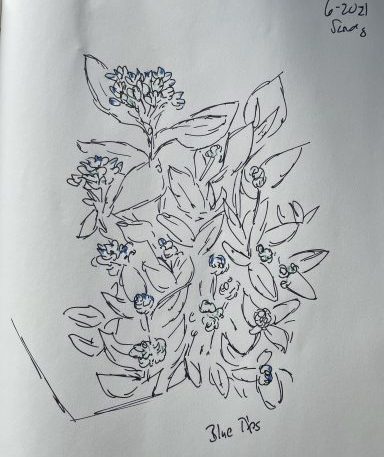It’s the last week of school. I am cutting through the library to get to a kindergarten classroom. I stop when I see our ITL teacher, Eric, and our Library Media Specialist, Rae Ann on the floor cleaning up tissue paper, tongue depressors, glue, beads, pipe cleaners. “What are YOU doing?!? They proceeded to tell me about the library being transformed into a Maker Space. They explained that the first graders had just finished studying the life cycle of the butterfly with their classroom teachers. The work they had just done in the Maker Space was an extension of that unit of study. In the Maker Space, with the guidance of Eric and Rae Ann and the each of the 4 classroom teachers, the first graders, in partners, had to create the four stages of the butterfly with the given materials. Eric showed me the planning papers and some of the finished products. I was sucked into the story of their work. My first thoughts were – this is collaboration at it’s best, this is independent learning, inquiry, problem solving, it’s playful, authentic assessment. My last thought was – the kids need to sketch their work, write to think and reflect on the whole process.
So, on the last few days of school, I found myself in two first grade classrooms watching pairs of 7 year olds observe, study and reflect on their own work in the Maker Space and even further back to their unit work in the classroom.
I began with each class by giving them the back story as to why I was there. I told them I was so amazed at their process, from their classroom work, to their work in the computer lab to their work in the Library/Maker Space. I told them that I thought they deserved time to draw, think, and remember. It was without hesitation or questions, that each pair of kids went off to work.




In both Leigh-Ann’s room and Amy’s room. We watched and listened. We saw children picking up their own work and studying it. We saw children labeling, extensively (clearly using what they had learned in WW in K and 1!) We saw children persevere through mistakes. We saw children making decisions as to how to organize their paper, their reflection. We heard children talking “If I did it again, I would have used a tongue depressor for the body because the pipe cleaner isn’t very strong.” (clearly, their learning is not done, it is ongoing). We heard children whispering to each other, “What’s that called again.” We heard children read poems that emerged from their work. As Caitlin drew and observed her tissue paper egg, she drew the egg on the stick and then she found herself writing a poem about eggs – the kind you eat! Then she bounced another poem about the caterpillar. Building Butterfly Life Cycle Reflection 2 (1)
We as teachers are programmed to plan. We read our units, we craft writing as part of our plans. We plan, sometimes, down to the minute all we will say and do leaving no space for spontaneity. I think we need strive for balance. No doubt, planning is an essential part of our work as teachers – however, we must create this space for ourselves and our students – a space for spontaneity. This whole happening – between Eric, Rae Ann, Leigh-Ann, Amy, 40 first graders and I was spontaneous. An idea was born through a conversation and we gave time and structure to the idea – all in service of building thinkers, reflective writers.



The best ideas are spontaneous! I’m glad I got to walk by this experience during my visit. It was a joy to see those kids so engaged!
LikeLiked by 1 person
Yes, yes, and more yesses! Without space and time, where do creativity and problem-solving grow? It seems like your teachers have got it right. I am inspired!
LikeLiked by 1 person
Love all of this. So many wonderful thoughts and ideas for ME to reflect on as we begin to create our iLab/Makerspace this summer. Thank you!
LikeLiked by 1 person
How did I not hear about this?? So excited to chat more about how it went!!!
YAY!
LikeLiked by 1 person
We all need our parameters changed or taken away from time to time – I love this making space for spontaneity idea. Room has to be made for the creative juices to flow!
LikeLike